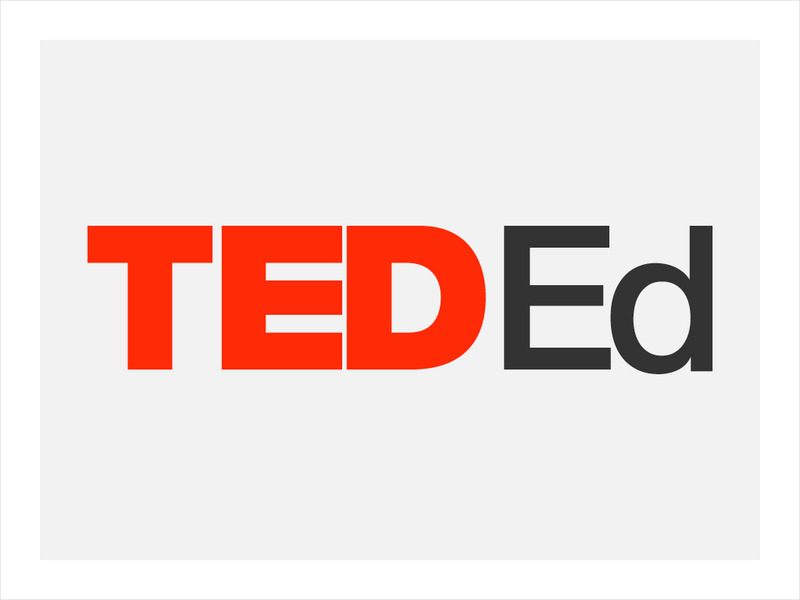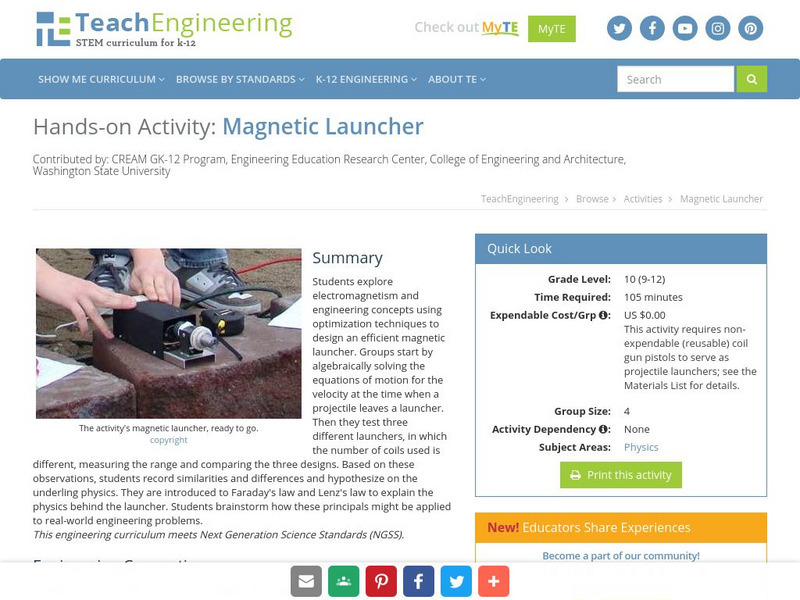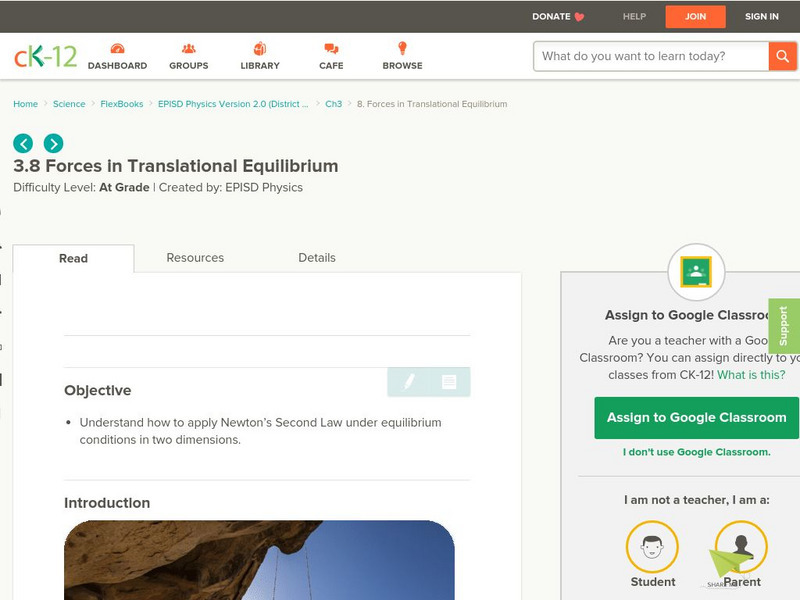TED Talks
Ted: Ted Ed: If Superpowers Were Real: Flight
Is it scientifically possible to fly? In this series, creator Joy Lin tackles six superpowers and reveals just how scientifically realistic they can be to us mere mortals. [5:11]
TeachEngineering
Teach Engineering: Up, Up and Away! Airplanes
The airplanes unit begins with a lesson on how airplanes create lift, which involves a discussion of air pressure and how wings use Bernoulli's Principle to change air pressure. Following the lessons on lift, students explore the other...
Georgia Department of Education
Ga Virtual Learning: A Brief History of Astronomy
In this interactive module students will explore what different ancient cultures believe was an explanation of the stars and planets. They will look at how the work of Nicolas Copernicus revolutionize the world of astronomy and learn how...
Pennsylvania State University
Kettering University: The Simple Harmonic Oscillator
The motion of three simple harmonic oscillators is animated to illustrate the effects of mass and spring constant upon the motion. Several equations and a lengthy discussion accompany the animations.
Physics Classroom
The Physics Classroom: Vectors: Double Trouble in 2 Dimensions
In this interactive tutorial, analyze two-body problems in which the objects are moving in different directions.
Walter Fendt
Walter Fendt: Apps Zur Physik
This site, in German, offers numerous apps that illustrate common physics principles. Apps are organized into categories: mechanics, oscillations and waves, electrodynamics, optics, thermodynamics, the theory of relativity, physics of...
Michigan Reach Out
Nasa: Soda Pop Can Hero Engine
Students explore all three parts of Newton's Laws of Motion by observing a spinning pop can.
TeachEngineering
Teach Engineering: Magnetic Launcher
Students explore electromagnetism and engineering concepts using optimization techniques to design an efficient magnetic launcher. Groups start by algebraically solving the equations of motion for the velocity at the time when a...
University of St. Andrews (UK)
University of St. Andrews: Isaac Newton (1643 1727)
This life of Isaac Newton' traces his life from birth through childhood to his rise as a renown scientist and mathematician.
Ducksters
Ducksters: Biography for Kids: Scientist: Isaac Newton
Investigate Isaac Newton's biography on this site. Learn how he was a scientist who discovered gravity, the three laws of motion, and calculus. He is considered one of the great scientists in history.
Cosmo Learning
Cosmo Learning: Fundamentals of Physics
A collection of video lectures from a fundamentals of physics course taught at Yale University. The course is an introduction to physics and discusses Newtonian mechanics, special relativity, gravity, thermodynamics, and waves. Course...
Science4Fun
Science4 Fun: Force
What is force? Illustrated discussion of how force is calculated and three familiar types.
CK-12 Foundation
Ck 12: Forces in Translational Equilibrium
[Free Registration/Login may be required to access all resource tools.] The following tutorial helps students to understand how to apply Newton's Second Law under equilibrium conditions in two dimensions.
Curated OER
Cornell University: Orbital Motion and Kepler's Laws
At this site from Cornell University, Kepler's three laws of planetary motion are stated. There are brief explanations of each. The laws are applied to explain the features of planetary orbits as well as the motion of binary star...
Cosmo Learning
Cosmo Learning: Physics Iii: Vibrations and Waves
A collection of video lectures from a physics course focusing on vibration and waves taught at the Massachusetts Institute of Technology. The course overviews topics dealing with mechanical vibration and waves with twenty-three lectures....
Khan Academy
Khan Academy: Isaac Newton
A biography of the scientist that developed the theory of gravity and founded the three basic laws of motion, Isaac Newton.











